Main menu
Common skin conditions

NEWS
Join DermNet PRO
Read more
Quick links
Superimposed segmental manifestation of polygenic skin disorders — extra information
Superimposed segmental manifestation of polygenic skin disorders
Author: V.N Hiromel de Silva, Dermatology Registrar, Waikato Hospital, New Zealand, 2008.
Introduction
Many acquired skin disorders, i.e., skin disorders that are not present at birth, have a polygenic background. This means that there are several genes that predispose someone to get the disorder. Environmental triggers may also be important.
Sometimes these skin disorders present in childhood or adult life with linear or segmental lesions, following the lines of Blaschko. This suggests there is cutaneous mosaicism involved, i.e. the individual has two cell lines, one of which predisposes them to the condition. If this is the only manifestation of the skin condition it may be considered an isolated segmental eruption. For example, prominent white marks due to vitiligo may be confined to the outer aspect of one arm or face.
Vitiligo arising in segmental distribution only
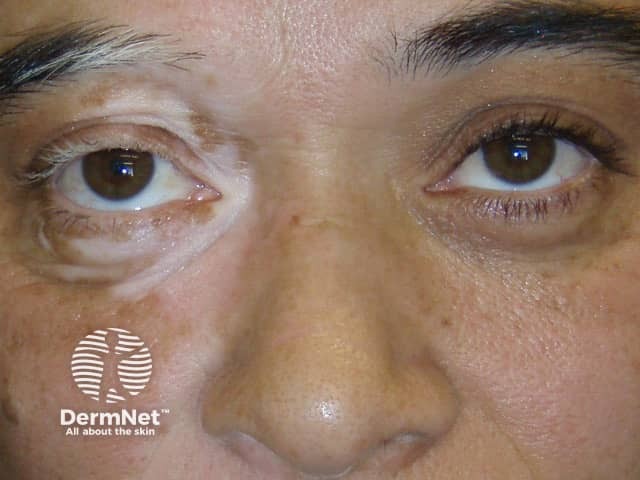
Segmental vitiligo
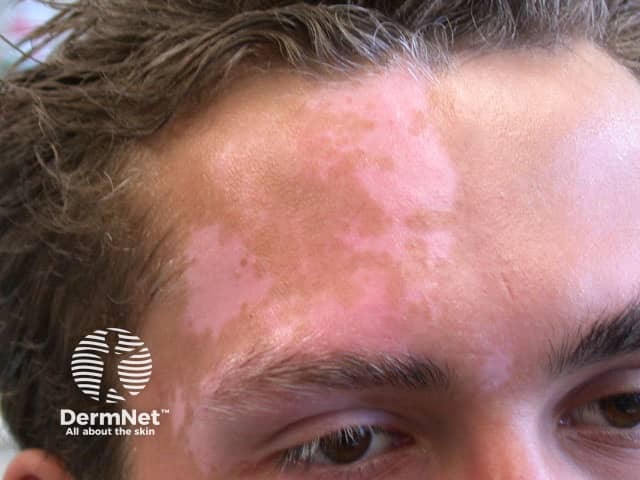
Segmental vitiligo
Very often, the skin disorder also occurs elsewhere on the body in the more usual sites. In this case, it is described as a superimposed segmental eruption. Using the same example of segmental vitiligo affecting an arm, a few white patches may later appear elsewhere on the body.
Segmental involvement tends to be more severe than the other patches. The segmental lesions are also more likely to appear at a young age or may be present at birth. They often precede the appearance of nonsegmental lesions.
The segmental lesions are often very persistent and more difficult to treat than patches elsewhere on the skin.
Superimposed segmental manifestation of polygenic skin disorders

Lichen planus in Blaschko distribution
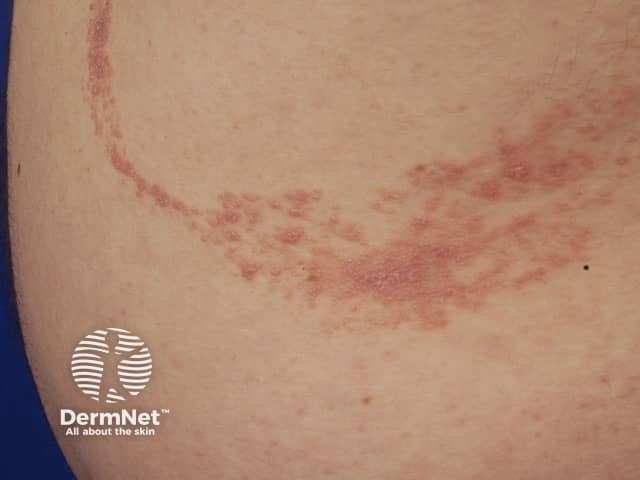
Lichen planus in Blaschko distribution
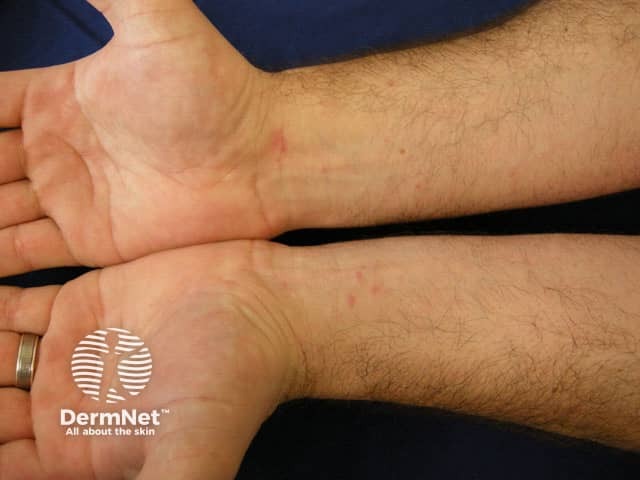
Lichen planus on wrists
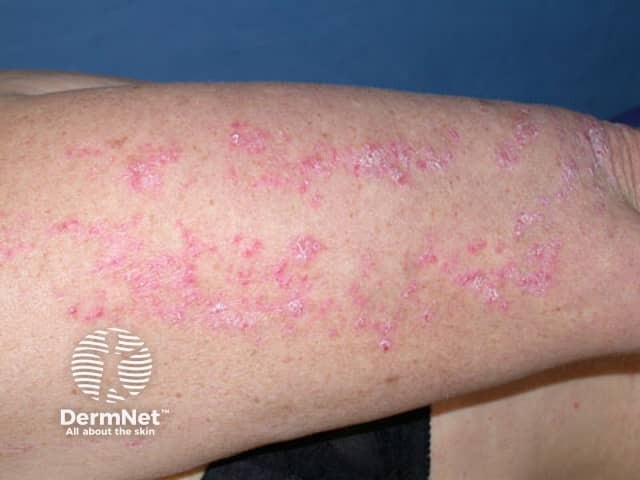
Psoriasis in Blaschko distribution
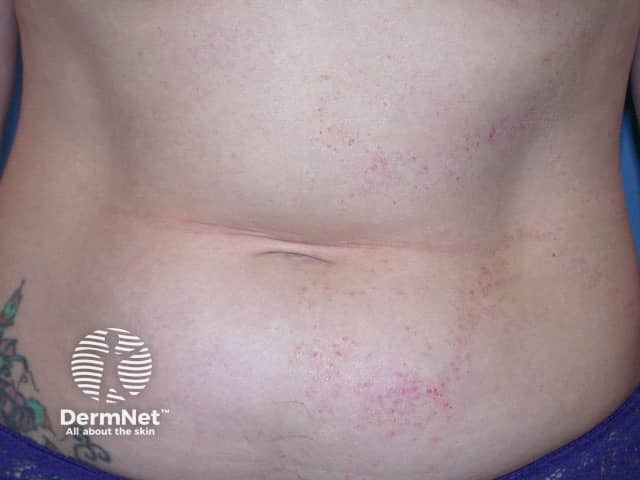
Psoriasis in Blaschko distribution
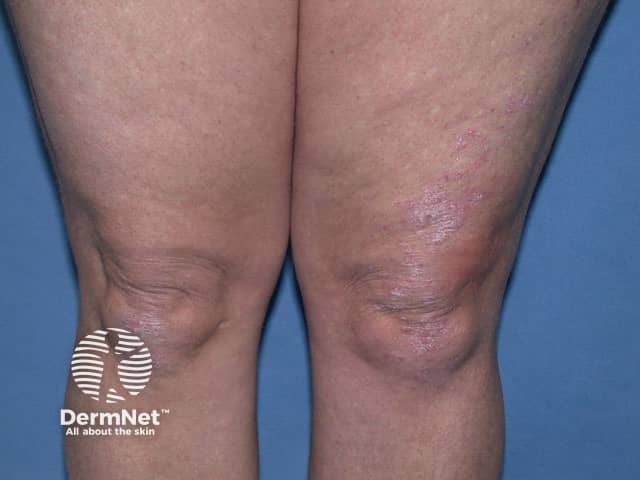
Psoriasis of knees
What is the cause for these lesions?
How these lesions develop is not entirely clear. Complex genetic theories have suggested that segmental eruptions occur within a patch of homozygous or hemizygous tissue at an early developmental age because of a loss of heterozygosity involving one of the predisposing genes in a somatic cell.
Loss of heterozygosity may result from various mutational mechanisms such as point mutation, deletion or mitotic nondysfunction.
Which skin conditions may present with superimposed or isolated segmental disease?
A number of skin conditions have been occasionally reported to present as segmental disease. The association of segmental disease with scattered lesions elsewhere has only recently been recognised. The following conditions may follow this pattern. There may be others, as yet unrecognised.
References
- Superimposed segmental manifestation of polygenic skin disorders. Happle R. J Am Acad Dermatol 2007;57:690–9. Medline.
